Abstract
A syndrome of metabolic acidosis of unknown etiology was diagnosed in twelve beef calves 7 to 31 days old. Principal clinical signs were unconsciousness or depression concomitant with weakness and ataxia. Other signs included weak or absent suckle and menace reflexes, succussable nontympanic fluid sounds in the anterior abdomen, and a slow, deep thoracic and abdominal pattern of respiration. The variation in clinical signs between calves was highly correlated (r = 0.87, P less than 0.001) with their acid-base (base deficit) status. Abnormal laboratory findings included reduced venous blood pH, pCO2 and bicarbonate ion concentration as well as hyperchloremia, elevated blood urea nitrogen, increased anion gap and neutrophilic leukocytosis with a left shift. Sodium bicarbonate solution administered intravenously effectively raised blood pH and improved demeanor, ambulation and appetite. All calves did well following a return to a normal acid-base status.
Full text
PDF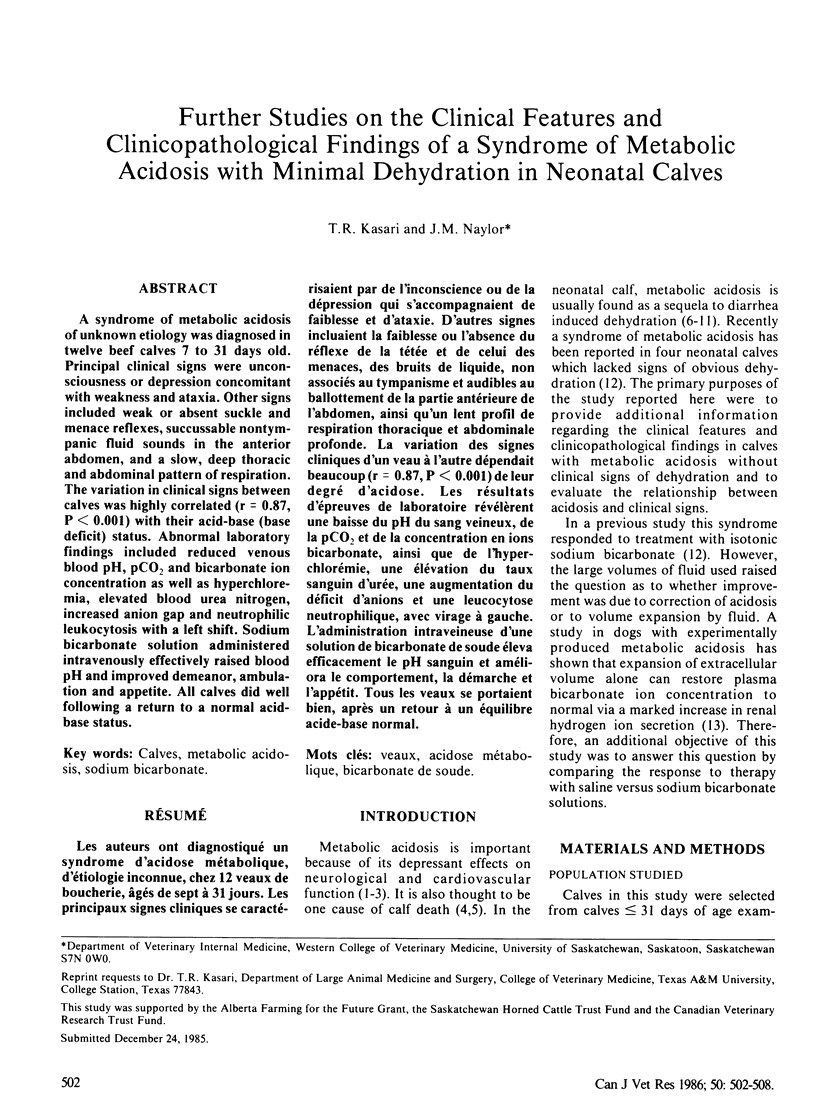
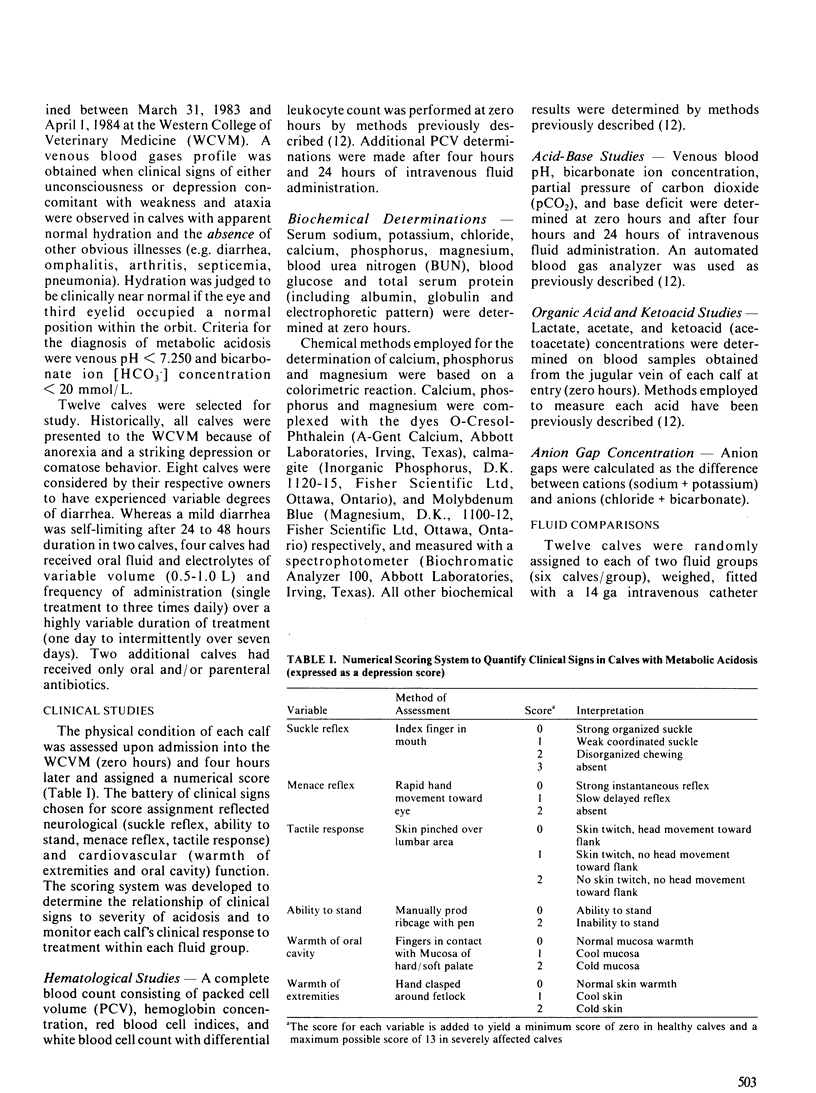
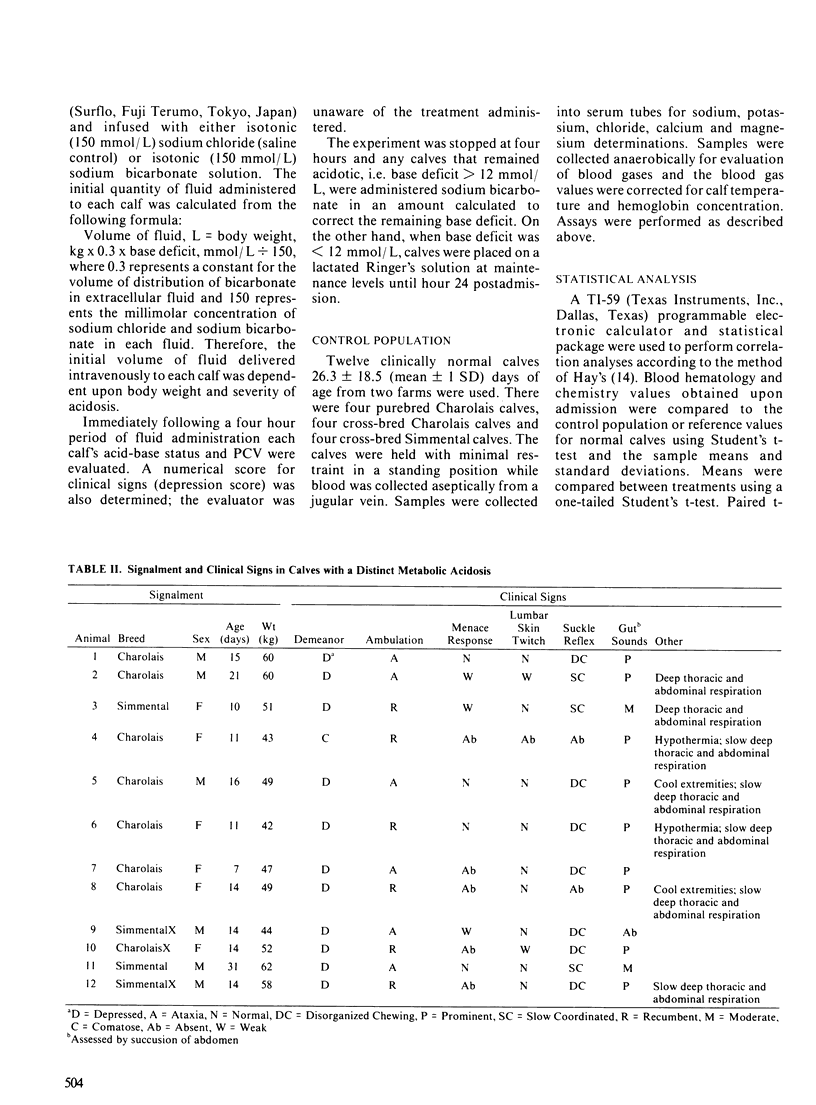
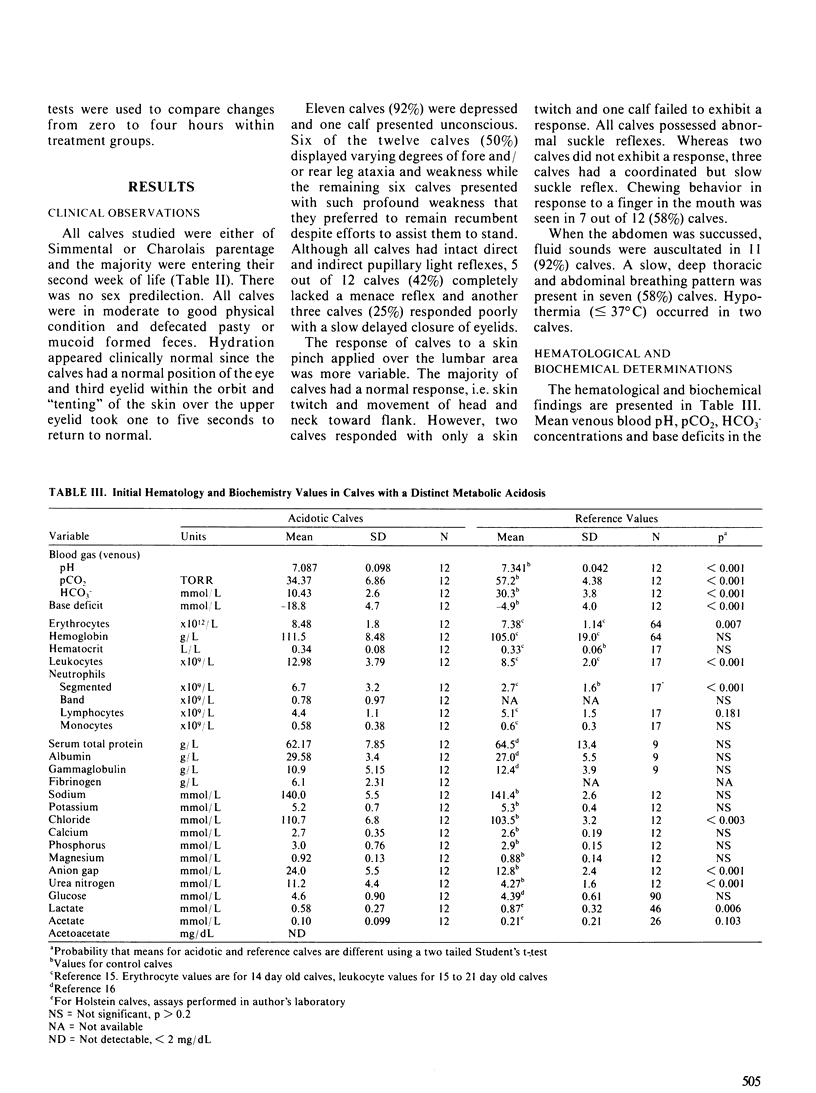
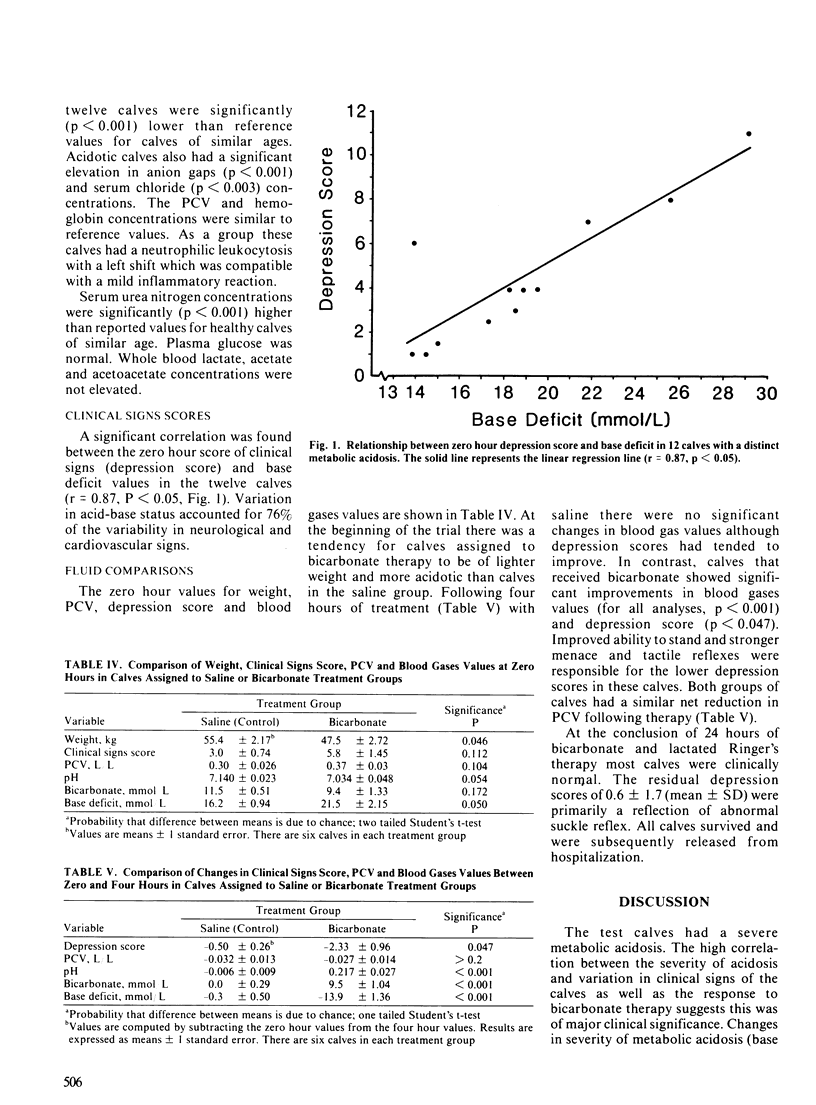
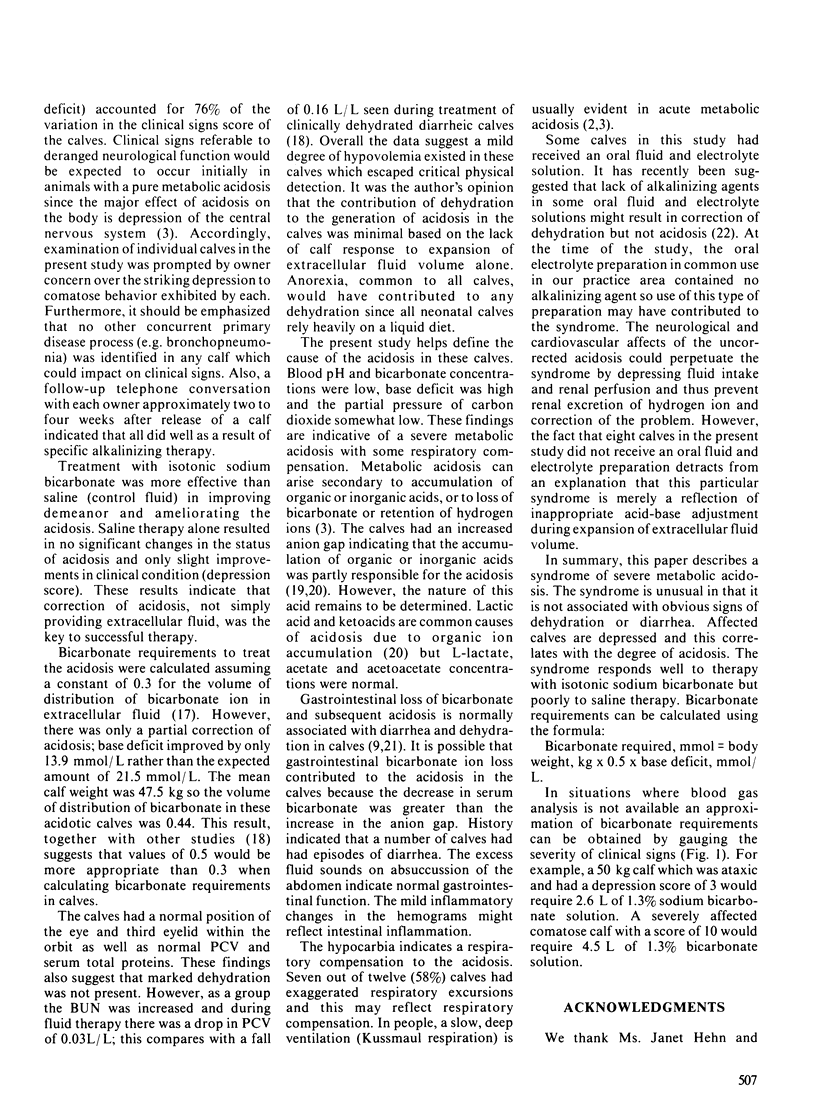
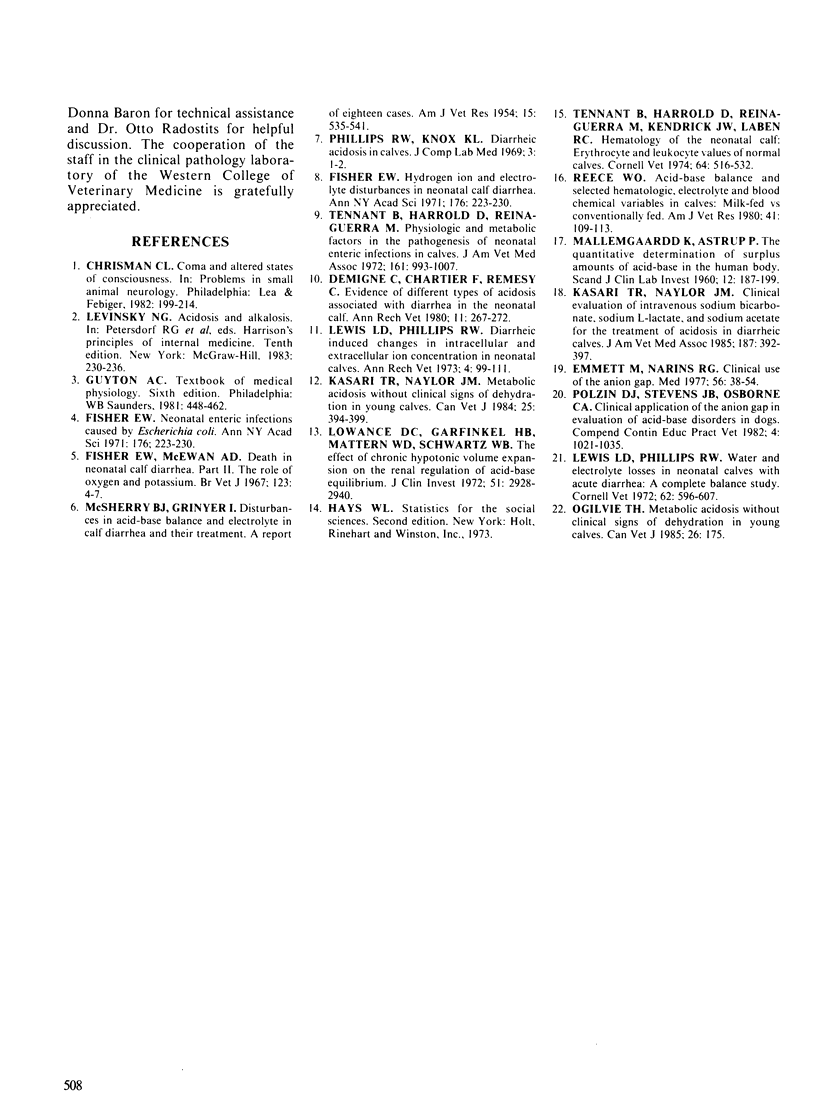
Selected References
These references are in PubMed. This may not be the complete list of references from this article.
- Demigné C., Chartier F., Rémésy C. Evidence of different types of acidosis associated with diarrhea in the neonatal calf. Ann Rech Vet. 1980;11(3):267–272. [PubMed] [Google Scholar]
- Emmett M., Narins R. G. Clinical use of the anion gap. Medicine (Baltimore) 1977 Jan;56(1):38–54. [PubMed] [Google Scholar]
- Kasari T. R., Naylor J. M. Clinical evaluation of sodium bicarbonate, sodium L-lactate, and sodium acetate for the treatment of acidosis in diarrheic calves. J Am Vet Med Assoc. 1985 Aug 15;187(4):392–397. [PubMed] [Google Scholar]
- Kasari T. R., Naylor J. M. Metabolic acidosis without clinical signs of dehydration in young calves. Can Vet J. 1984 Oct;25(10):394–399. [PMC free article] [PubMed] [Google Scholar]
- Lewis L. D., Phillips R. W. Water and electrolyte losses in neonatal calves with acute diarrhea. A complete balance study. Cornell Vet. 1972 Oct;62(4):596–607. [PubMed] [Google Scholar]
- Lowance D. C., Garfinkel H. B., Mattern W. D., Schwartz W. B. The effect of chronic hypotonic volume expansion on the renal regulation of acid-base equilibrium. J Clin Invest. 1972 Nov;51(11):2928–2940. doi: 10.1172/JCI107117. [DOI] [PMC free article] [PubMed] [Google Scholar]
- McSHERRY B. J., GRINYER I. Disturbances in acid-base balance and electrolyte in calf diarrhea and their treatment; a report of eighteen cases. Am J Vet Res. 1954 Oct;15(57):535–541. [PubMed] [Google Scholar]
- Ogilvie T. H. Metabolic acidosis without clinical signs of dehydration in young calves. Can Vet J. 1985 May;26(5):175–175. [PMC free article] [PubMed] [Google Scholar]
- Reece W. O. Acid-base balance and selected hematologic, electrolyte, and blood chemical variables in calves: milk-fed vs conventionally fed. Am J Vet Res. 1980 Jan;41(1):109–113. [PubMed] [Google Scholar]
- Tennant B., Harrold D., Reina-Guerra M., Kendrick J. W., Laben R. C. Hematology of the neonatal calf: erythrocyte and leukocyte values of normal calves. Cornell Vet. 1974 Oct;64(4):516–532. [PubMed] [Google Scholar]
- Tennant B., Harrold D., Reina-Guerra M. Physiologic and metabolic factors in the pathogenesis of neonatal enteric infections in calves. J Am Vet Med Assoc. 1972 Nov 1;161(9):993–1007. [PubMed] [Google Scholar]


